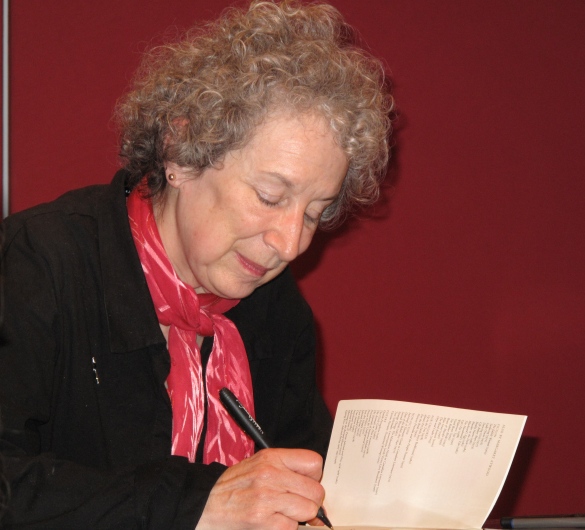Atwood, Margaret
Margaret Atwood is a novelist, poet, journalist, literary critic, businesswoman and environmental activist. She was born in Ottawa, Canada, on 18th November 1939, to Carl Edmund Atwood – an entomologist – and Margaret Dorothy Atwood – a nutritionist. Due to the nature of her father’s work, the young Margaret Atwood was frequently outdoors, and developed a fascination with the Canadian landscape. From a young age she was an extremely keen reader of short stories, tales and comic books.
In 1946, the family moved to Toronto, where Margaret graduated from Leaside High School in 1957. She went on to take a bachelor’s degree in English Literature at the University of Toronto, before relocating to the United States for a master’s degree at Radcliffe College, Massachusetts, in 1961. Shortly before starting at Radcliffe, Atwood privately printed a book of poems named Double Persephone, which won the E J Pratt Medal. This was her first major literary success, and explored the connection between human beings and the natural world around them.
From 1965 through to 1985, she lectured at a range of universities around the world, including the University of British Colombia and New York University – where she became Berg Professor of English. She was largely influenced by the feminist movement that started in the 1960s, and this was reflected in her literary and critical writing. In 1969 she published The Edible Woman, her first major novel and a powerful feminist text.
Atwood published Oryx and Crake in 2003, a novel which has drawn critical acclaim due to its interaction with the theme of environmental pollution and destruction. She has described the novel as a work of 'speculative fiction', distinguishing between this and science fiction in the fact that speculative fiction is more grounded in reality.
Margaret Atwood is known for her interest in artistic and technological innovation. In 2004, she invented the LongPen, a form of remote technology which allowed her to sign books for her fans without physically carrying out book tours. In 2014 she wrote a novel called Scribbler Moon for the Future Library Project, an arts project that aims to collect one piece of fiction by a famous author every year until 2114, and then release the whole collection. Atwood was the first contributor to the project.
Recent publications include
Hag-Seed (2016), a retelling of Shakespeare's
The Tempest, and
The Testaments, a sequel to
The Handmaid's Tale, which was co-winner of the 2019 Booker Prize.



